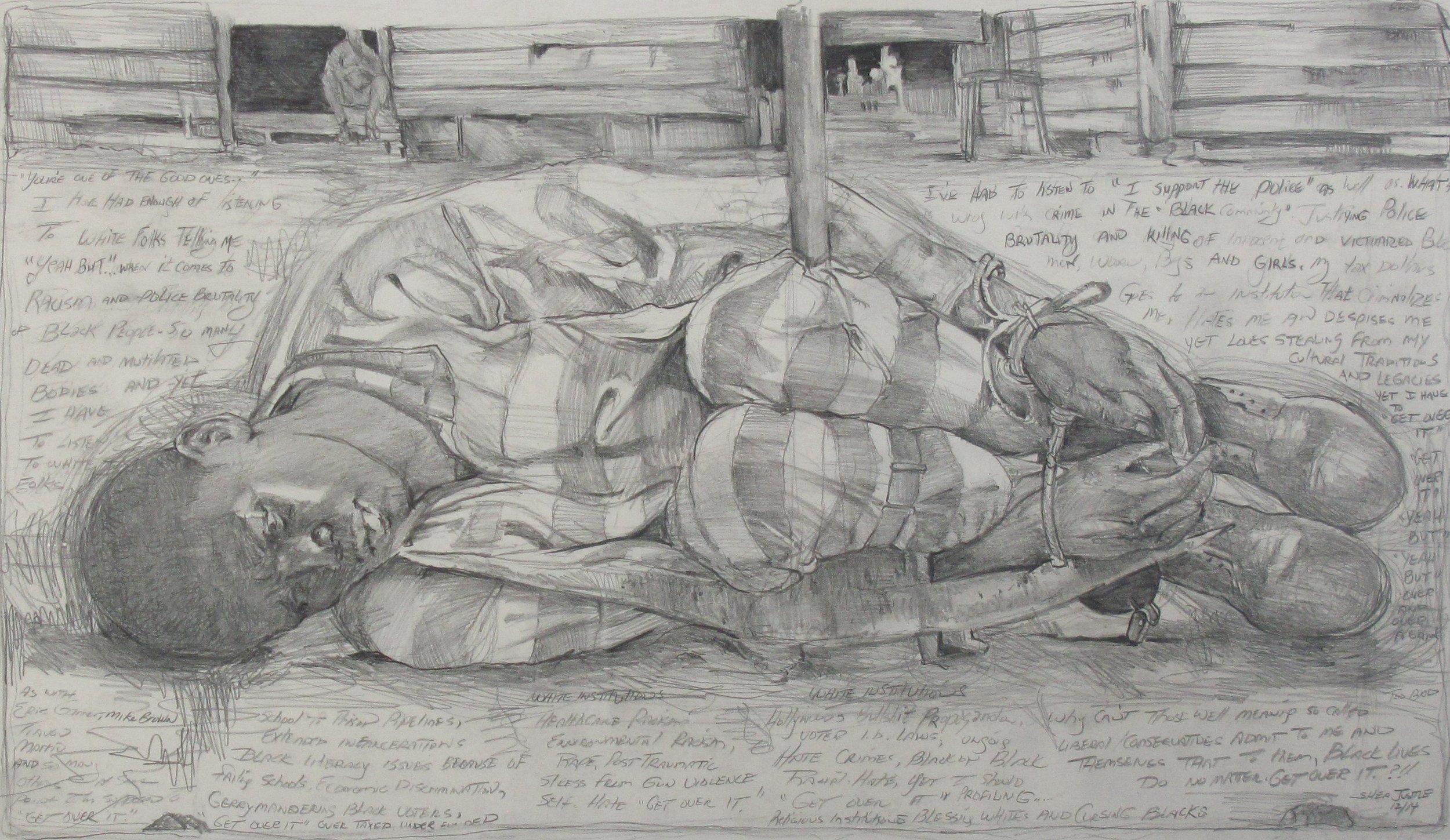In ‘History Is No Mystery,’ artist Shea Justice draws parallels between American racism past and present
ART REVIEW
In ‘History Is No Mystery,’ artist Shea Justice draws parallels between American racism past and present
The show at Fountain Street Gallery features probing pencil drawings and collages.
By Cate McQuaid Globe Correspondent,Updated June 14, 2022, 4:44 p.m.
READ THE ARTICLE in the BOSTON GLOBE
Shea Justice, "Child Prison Punishment," pencil, in "History Is No Mystery" at Fountain Street Gallery.SHEA JUSTICE
In “History Is No Mystery” at Fountain Street Gallery, Shea Justice’s sobering series of collages and drawings put American racism in sharp relief against the backdrop of the US Constitution.
A pencil drawing of Derek Chauvin kneeling on George Floyd’s neck takes center stage in “Constitution: I Can’t Breathe.” The only colors in the drawing are on the American flag Justice adds to the bumper of Chauvin’s cruiser. He stacks Floyd’s final words beneath him: “Mama.” “I can’t breathe.” Yellow caution tape brackets the scene.
Shea Justice, "Constitution: I CAN’T BREATHE," collage.SHEA JUSTICE
It’s a stark contrast to the Constitution’s Preamble, seeking “to form a more perfect Union, establish Justice, insure domestic Tranquility, … and secure the Blessings of Liberty to ourselves and our Posterity.”
“Constitution: Sojourner and Harriet” revolves around Justice’s painting of abolitionist Sojourner Truth. It brims with recent news items revealing or suggesting racist motives on the part of people in power. One headline reads: “Nixon Aide Reportedly Admitted Drug War Was Meant To Target Black People.” Just below a design for the proposed Harriet Tubman $20 bill, there’s a news clip about former Representative Steve King, who in 2016 argued that the bill should remain as it is: “‘It’s not about Harriet Tubman. It’s about keeping the picture on the $20,’ Steve King said, pulling a $20 bill from his pocket and pointing at President Andrew Jackson,” Politico wrote.
Shea Justice, "Constitution: Sojourner and Harriet," collage.SHEA JUSTICE
It’s easy to find examples of racism; it’s more challenging to visually capture its evolution, and Justice does it brilliantly. He’s known for scrolls chronicling the news with lively drawings, clipped headlines, and his own penned thoughts. Hopes raised, hopes dashed, as history unfurls.
But this show is best when it sharply juxtaposes past and present. In 2014, in the wake of Michael Brown’s killing by police in Ferguson, Mo., Justice found an unidentified old photo of a boy in a striped prison uniform cruelly bound to a pole. For “Child Prison Punishment,” he drew the heartbreaking image in pencil. “I have had enough of white people telling me ‘Yeah, but … ’ when it comes to racism and police brutality … ,” he writes around it. “So many dead and mutilated bodies.”
Perhaps the more things change, the more they stay the same. But witnessing them makes a difference, and Justice is a powerful witness.
SHEA JUSTICE: HISTORY IS NO MYSTERY
At Fountain Street Gallery, 460 Harrison Ave., through June 26. www.fsfaboston.com



